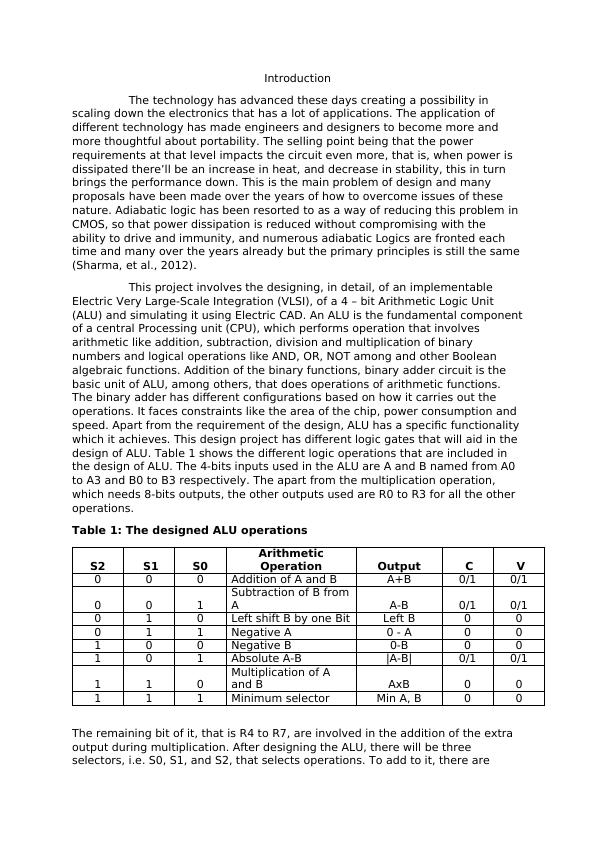Designing and Simulating a 4-bit ALU using Electric CAD
Added on 2022-11-01
4 Pages1007 Words88 Views
End of preview
Want to access all the pages? Upload your documents or become a member.
DIGITAL LOGIC QUESTION ONE 4 BIT ADDER-SUBTRACTOR
|10
|942
|259
Computer Organisation and Design - Doc
|14
|1400
|306
4CS015 Fundamentals of Computing - Assignment
|4
|606
|1175
Communication Device Theory and Design
|12
|1044
|14
Digital Electronics Laboratory Assignment
|19
|1972
|114
Benefits of Using Binary Arithmetic System
|10
|2213
|290


